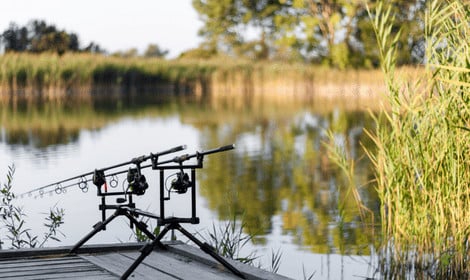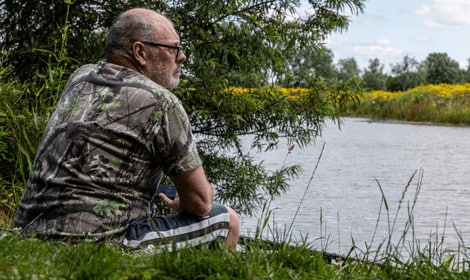
Carp fishing can be a challenging branch of angling for beginners that is far from simply chucking out any old bait and hoping for the best.
Carp fishing has approaches and principles that apply only to carp and a few other coarse fish species.
If you are not willing to consistently learn about the fish you want to catch, how they behave, where they reside in the water, what baits they prefer, and the various rigs and baiting strategies you can use, then you better believe you’re not going to be overly successful.
Yes, chucking out a simple rig and hoping for the best will catch you the odd fish, but if you want consistent success, there is a lot to learn.
So, stop asking, “why is carp fishing so hard” and have a read at this post that should outline why people believe carp fishing is so hard and how you can go about learning the steps to become more successful.
Why is Carp Fishing so Hard?
Carp are far from the easiest fish to catch; for beginners, this may be frustrating, but I’d say this is what makes carp fishing one of the most desirable sport fish in the UK and across Europe.
If they were too easy to catch then the euphoria of finally putting a large specimen fish in the net would quickly be lost.
But, why is carp fishing said to be so difficult?
Carp are thought to be so hard to catch due to the number of factors that you must get right to hook into feeding fish.
These factors include your rig presentation, the bait you’re using, where in the water you’re fishing, the area of the lake you’re fishing and even your pre-baiting approach.
Carp are wary fish and will often investigate any bait they come across to determine if it is edible and safe to consume.
If your rig is presented in a way that it does not act naturally in the water in the way it sinks and moves, then this can be a massive factor in if you have the chance of catching fish or not.
As carp often taste baits before consuming, if they suck the bait into their mouth and taste the metallic taste of a hook they can often eject the bait and move on to other food.
Although carp are classed as bottom feeders, they only spend around 40-50% of their time feeding directly on the bottom.
This can trip up a lot of new anglers as they consistently throughout bottom rigs and baits without considering any external parameters to try and paint a picture of what depth in the water the fish could be feeding.
They will often find areas of the venue that they feel comfortable feeding in, and other areas of the venue could often be void of any feeding carp.
How to Make Carp Fishing Easier?

A lot of anglers will tell you that carp fishing is a hit-and-miss and hobby.
Some days, you get plenty of carp on the bank, whereas you struggle to catch even a single carp on other days. However, that’s not the case.
You’ve just located a good spot on the lake in good conditions on the days when you get a lot of fish in the net.
But how can you make sure that you get a good spot the majority of the time you head out for a session? Watercraft is the art of spotting a productive swim.
It is a combination of spotting visual signs, learning a venue, knowing how weather conditions affect the carp, how to spot carp patrol routes and the role of bottom composition in carp behaviour.
Watercraft also includes decoding different carp behaviours to understand when the perfect time to fish them is. These behaviours include carp jumping, rolling and patrolling.
The first aspect of watercraft is spotting where the carp are feeding or are present.
These are some of the common things you can look out for:
- Feeding bubbles
- Carp Jumping
- Silty patches in the water
Features are the parts of the lake that usually hold natural food sources for carp to fish in. They’re also great places for carp to hide in because they have shadowy corners or dark nooks that the carp feel safe in.
When visiting a new lake, keep an eye out for the following features because you’ll be far more likely to catch carp when you fish in these areas.
- Islands
- Margins
- Overhanging trees
- Snags
This is only a very basic overview of watercraft and the weather, bottom composition, and patrol routes can all have a bearing on how much easier you can make carp fishing by learning to read the water to fish productive swims when you arrive at a venue.
If you’re interested in learning more about watercraft and also what rigs, baits and tackle can help make carp fishing easier, then take a look at my 144-page carp fishing guide for beginners.

